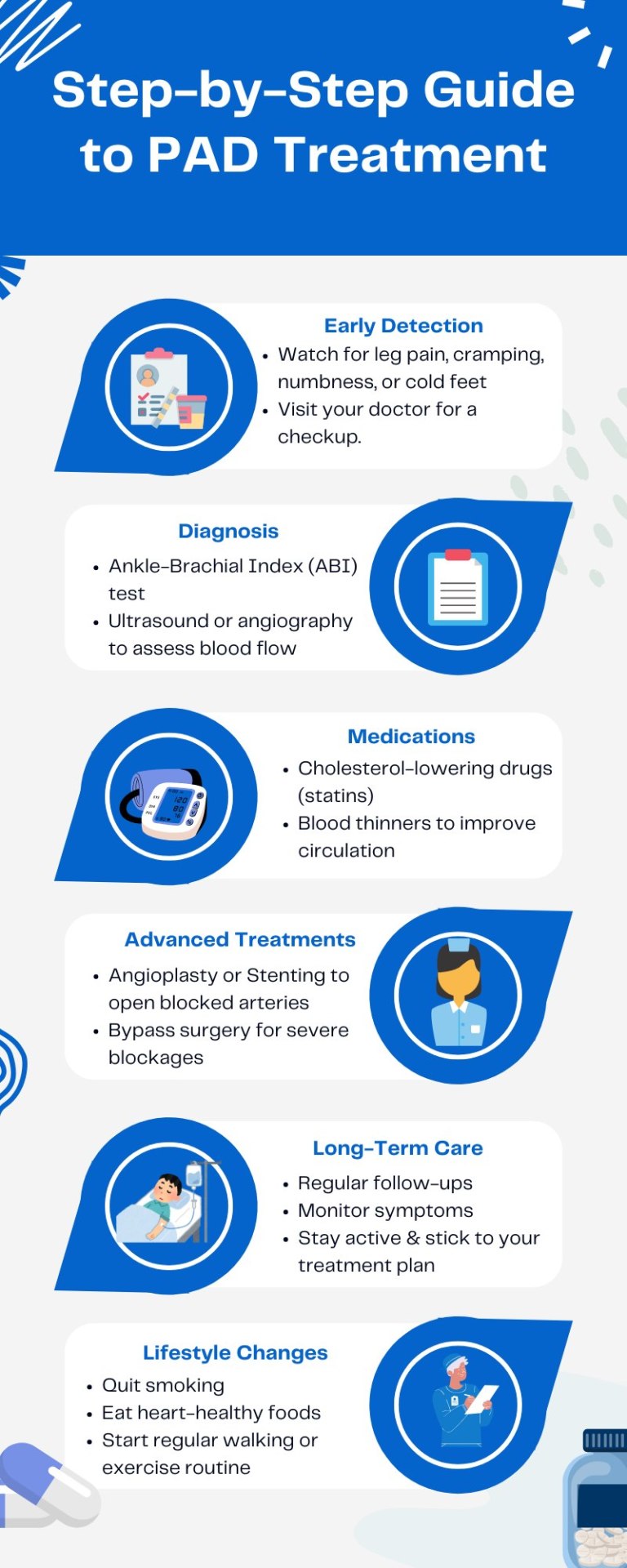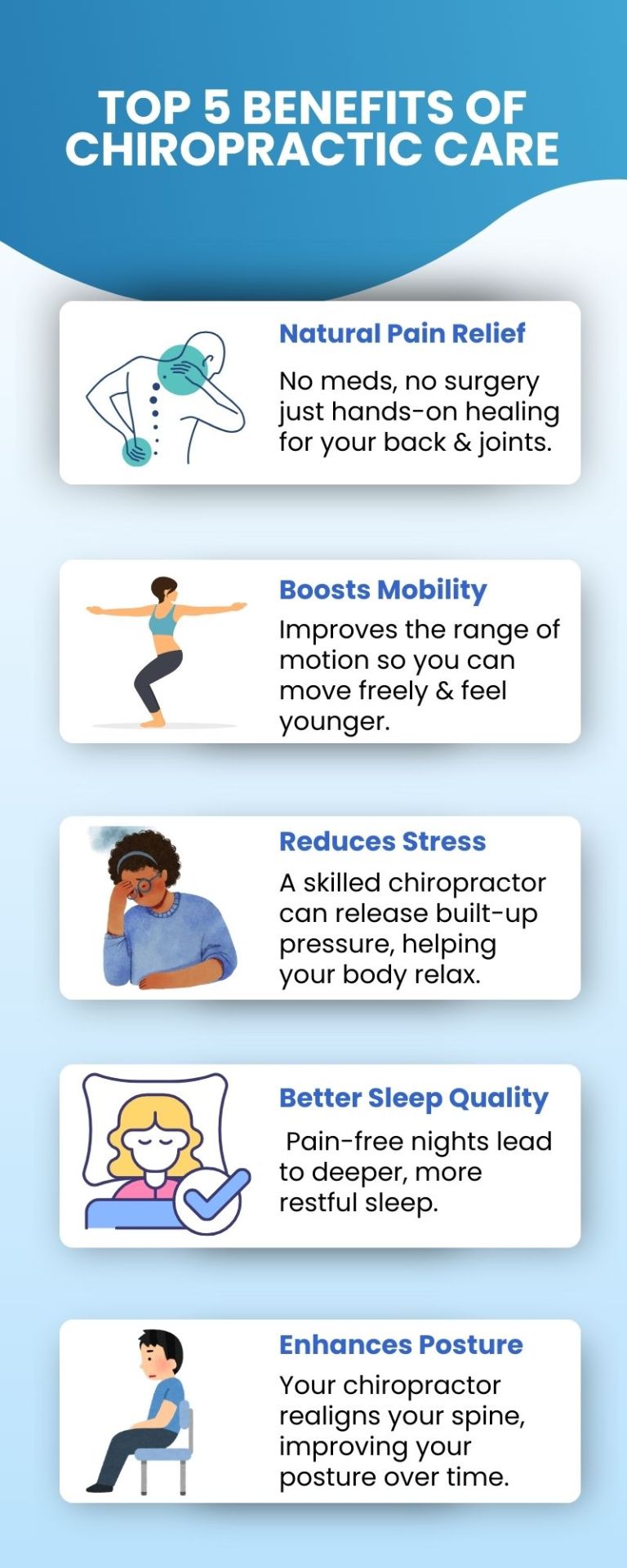Don't wanna be here? Send us removal request.
Text
Physical therapy plays a crucial role in managing Cerebral Palsy by improving mobility, muscle strength, balance, and overall physical function. Tailored exercise plans help reduce muscle stiffness, enhance coordination, and promote independence in daily activities. Early and consistent physical therapy can significantly improve a child's quality of life, enabling better posture, gait, and participation in school or play.
1 note
·
View note
Text

This infographic provides a clear, step-by-step overview of how Peripheral Artery Disease (PAD) is treated—from early detection and diagnosis to lifestyle changes, medication, and advanced treatment options like angioplasty or bypass surgery. It also highlights the importance of ongoing care to manage symptoms and prevent complications, making it an essential guide for anyone affected by PAD.
0 notes
Text
Peripheral Artery Disease (PAD) can be managed with lifestyle changes and treatment, allowing many to live long, healthy lives. However, untreated PAD increases the risk of heart attack, stroke, and limb loss. Early diagnosis and proper care are key to improving quality of life and longevity.
0 notes
Text
Peripheral Artery Disease (PAD) treatment has advanced with non-invasive procedures like laser atherectomy, drug-eluting stents, and minimally invasive angioplasty. These modern technologies offer faster recovery, reduced complications, and improved blood flow, helping patients regain mobility and enhance their quality of life.
0 notes
Text
Leg swelling can be more than just a minor inconvenience—it may signal a serious health issue. Watch for these warning signs: persistent swelling, pain or tenderness, skin changes (discoloration or ulcers), shortness of breath, and one-sided swelling. These symptoms could indicate conditions like deep vein thrombosis, heart failure, or lymphedema. Don’t ignore them—early medical attention can prevent complications and ensure proper treatment.
0 notes
Text
Your diet can be your strongest defense against PAD. Explore a list of science-backed foods that help improve circulation, fight plaque buildup, and support healthier arteries—one bite at a time.
0 notes
Text
our diet can be your strongest defense against PAD. Explore a list of science-backed foods that help improve circulation, fight plaque buildup, and support healthier arteries—one bite at a time.
0 notes
Text
Curious about how Coronary Artery Disease (CAD) differs from Peripheral Artery Disease (PAD)? This blog breaks it down in simple terms—covering symptoms, causes, and treatment options to help you stay informed and protect your heart and vascular health.
0 notes
Text
Targeted exercises and stretches help relieve pain, improve posture, and increase flexibility. Physical therapy strengthens core muscles, reduces injury risk, and boosts endurance—keeping construction workers active, pain-free, and ready for the job every day.
0 notes
Text
Look for compression socks that improve circulation, seamless designs to reduce irritation, moisture-wicking fabrics to prevent infection, and non-binding tops for comfort without restricting blood flow.
0 notes
Text

Top 5 Benefits Of Chiropractic Care
Seeing the best chiropractor can transform your daily life. From reducing stiffness and joint pain to improving flexibility and sleep, chiropractic care supports your body's natural healing. It’s ideal for people with active lifestyles, desk jobs, or those recovering from injury. Chiropractic care is gentle, effective, and focused on total wellness—not just temporary relief.
0 notes
Text
Feel better, move better, live better! Chiropractic care helps ease muscle tension, reduce joint pain, improve nerve function, and restore body balance. Whether you're healing from injury or maintaining wellness, chiropractic care supports long-term health.
0 notes
Text
Tingling feet, leg pain while walking? It might be more than diabetes—it could be PAD. Understand the hidden connection.
0 notes
Text
Peripheral Artery Disease (PAD) guidelines for better health include effective treatment options, lifestyle changes, and regular monitoring to improve circulation, reduce symptoms, and prevent serious complications.
0 notes
Text
Stenting for Peripheral Artery Disease (PAD) in the lower extremities is a minimally invasive procedure used to restore blood flow in narrowed or blocked arteries. A small mesh tube (stent) is placed inside the artery to keep it open, improving circulation and reducing symptoms like pain and cramping. This PAD treatment helps prevent complications such as ulcers or amputation. It offers a faster recovery compared to surgery, making it an effective option for managing PAD and enhancing mobility.
0 notes